Quiz: How well do you know Marcos and Martial Law?
WHICH STATEMENT IS TRUE? Round 1 of 6


Marcos was a bright and upstanding citizen from the time of his youth, with a morally upright character that destined him for the presidency.


Marcos was a decorated war hero, with medals from the United States recognizing his heroism during the war. These included two prestigious US Silver Stars and a Distinguished Service Cross.


Marcos led a successful guerilla campaign called Ang Mga Maharlika against the Japanese forces.
WRONG.
At only 18 years old and still a university student, Ferdinand was a convicted murderer who was found guilty of gunning down his father’s political rival for the position of district representative Julio Nandalusan in 1935. Evidence pointed to Ferdinand’s direct involvement and he was sentenced to life imprisonment. Learn more about it here 👉 Young Marcos
WRONG.
Though it is true that Ferdinand fought during the Second World War, claims about his military prestige have long been disputed and disproven. As a recent study by the National Historical Commission of the Philippines shows, official wartime documents and works on Bataan make no mention of Ferdinand’s exploits, his receipt of the three US medals, or the existence of the Ang Mga Maharlika guerilla unit. Learn more about it here 👉 Young Marcos
WRONG.
On multiple occasions, the US government did not recognize Ang Mga Maharlika as a guerilla unit due to the lack of evidence and inconsistencies in Ferdinand’s claims about their wartime accomplishments.
The movie Maharlika was produced as a propaganda attempt by Marcos to spread news of his “war exploits” to the Filipino public. Learn more about it here 👉 Young Marcos
WHICH STATEMENT IS TRUE? Round 2 of 6


Marcos’s implementation of Martial Law was not corruption. He was simply exercising a legitimate power of the President to protect his people.

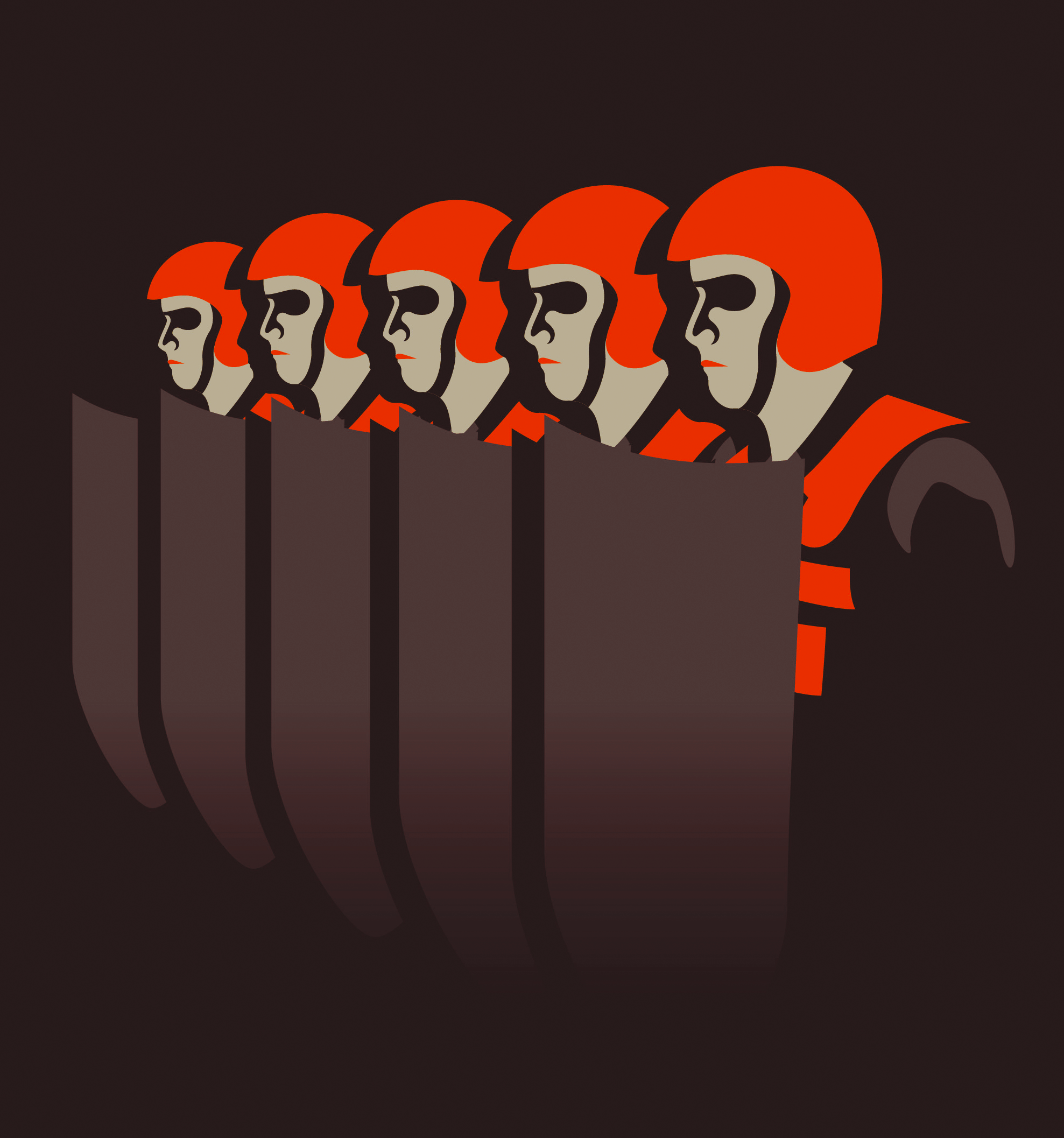
Marcos implemented Martial Law as a response to imminent threats to national security; because of Martial Law, crime rates dropped and Marcos could suppress the armed struggle against the government.

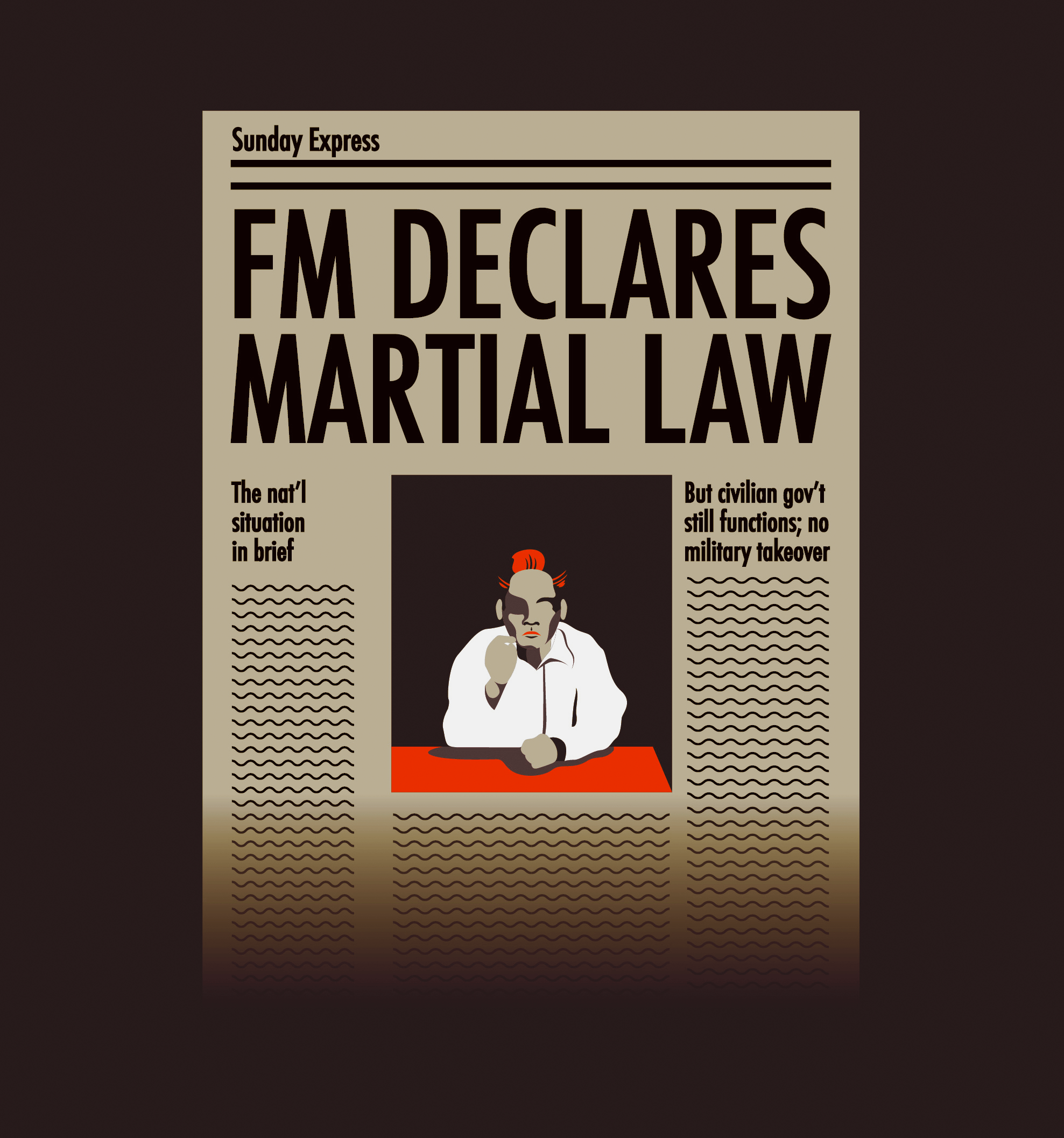
Marcos didn’t personally want to implement Martial Law. He was forced to do it because the violence had gotten out of hand, even affecting his top officials.
WRONG.
While declaring Martial Law is technically included among his powers, Marcos used those technicalities not to protect the people but to hold on to power. This was a planned move toward a parliamentary system of government that would have extended Marcos’s term indefinitely. This was also a move to eliminate the checks and balances—the legislative and judicial branches, and even the Constitution itself. Learn more about it here 👉 The Makings of a Constitutional Dictator
WRONG.
During the declaration of Martial Law, armed struggle against the government, often associated with the CPP-NPA, was still relatively young. While Marcos’s anticommunist campaign put them under heavy attack, the repressive regime also resulted in many youths joining the movement in the countryside. Estimates of the size of the NPA grew from about 1,500 in 1976 to about 35,000 in 1985. Learn more about it here 👉 Declaration of Martial Law
WRONG.
Marcos orchestrated the ambush of his Secretary of Defense, Juan Ponce Enrile, to heighten the public’s impression of threat to national security. Enrile admitted in an interview following his 1986 shift in allegiance against Marcos that the shooting of his convoy had indeed been staged by the administration.
On the night of the incident, Marcos told Enrile over the phone:
“Make it look good. Kailangan siguro ay may masaktan o kung mayroon mapatay ay mas mabuti. O, hala, sige, Johnny, and be sure the story catches the Big News or Newswatch and call me as soon as it is over.”
Learn more about it here 👉 Declaration of Martial Law
WHICH STATEMENT IS TRUE? Round 3 of 6


Back during Marcos’s time, many roads and bridges were being built, contributing greatly to economic development.


Back during Marcos’s time, poverty was at an all-time low due to his many inclusive economic projects.

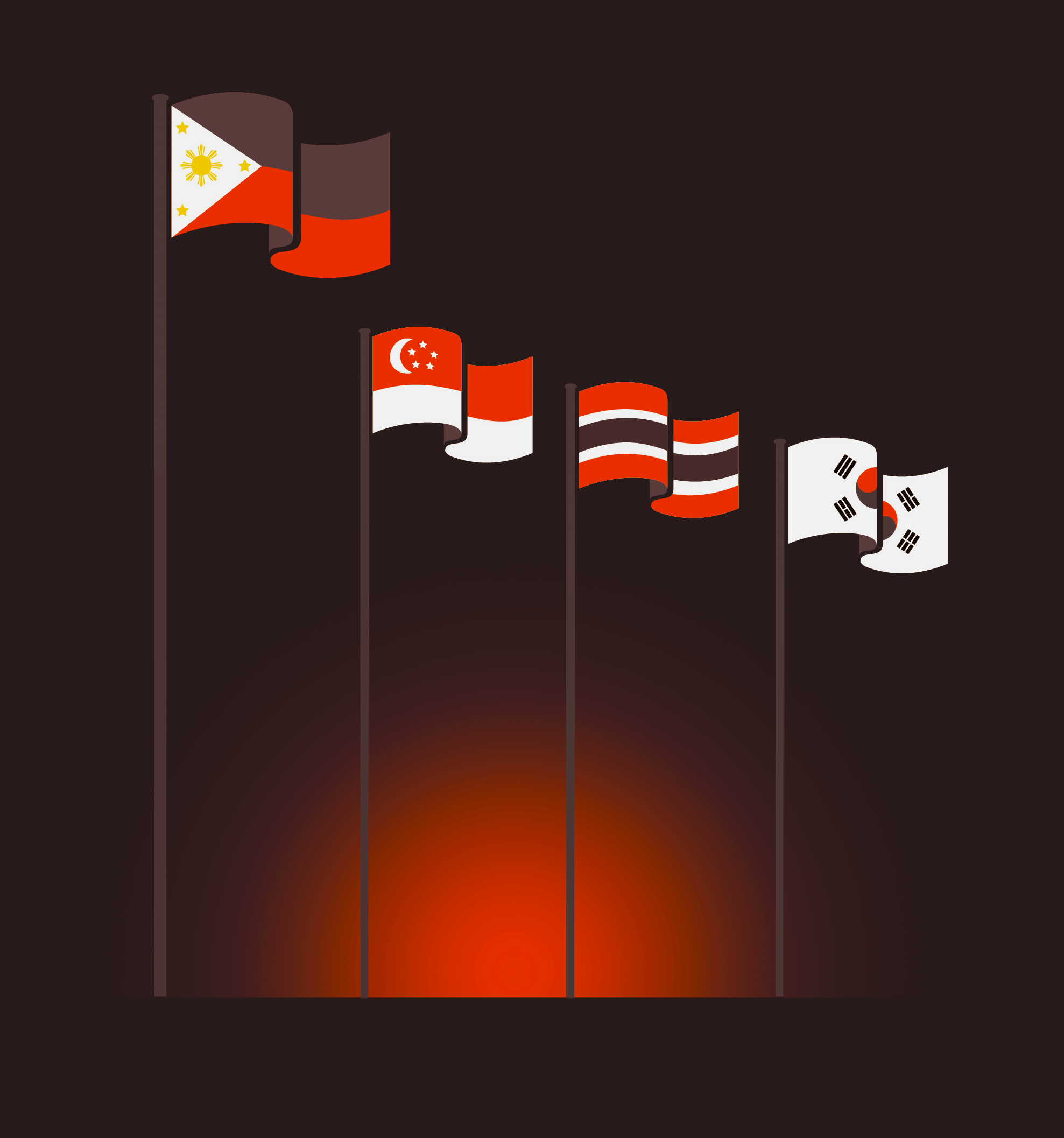
Back during Marcos’s time, the Philippines could compete with the best Asian economies. If Marcos hadn’t been overthrown, we could be like Singapore today.
WRONG.
Many of Marcos’ projects were funded by foreign loans that left the Philippines with an outstanding debt of about $28.3 billion by 1986. While various infrastructure projects allowed the appearance of economic activity, they really contributed to crippling the nation’s finances.
Moreover, many of these projects were implemented with the underlying objective of enriching Marcos himself and his many cronies, as they would divert massive funds and kickbacks from the project to their personal accounts.
Learn more about it here 👉 Edifice Complex: Building on the Backs of the Filipino People
WRONG.
Poverty worsened over the course of the Marcos era. Before Marcos took office, 4 out of 10 families were poor and by the end of his rule. 6 out of 10 families were poor.
While industrialization allowed the appearance of economic growth, poverty remained rampant in the country. Poverty incidence rose from 41.0% in 1965 to 58.9% in 1985, going as high as 70% in some provincial regions. Far from uplifting the poor, Imelda even attempted to conceal them from the global public with whitewashed walls in the Miss Universe pageant of 1974, and ordered the demolition of urban poor settlements by the airport because they were the first thing visitors from the international community would see.
Learn more about it here 👉 Martial Law in Data
WRONG.
During Marcos rule, we were dwarfed by Asian countries which had economies comparable to ours in the ’60s (e.g., Thailand, South Korea). By the mid-‘80s, our economy was left in the dust. This is precisely due to the Marcos period’s widespread plunder and mismanagement of national finances that the Philippines has struggled in the past decades to recover until today.
From a nominal figure of $0.36 billion in 1961, our external debt skyrocketed to $28.26 billion in 1986. Marcos’s debt-driven growth was growth that sacrificed long-term benefits for short-term gratification.
Learn more about it here 👉 Martial Law in Data
WHICH STATEMENT IS TRUE? Round 4 of 6


Martial Law violence was limited to Metro Manila. The provinces did not experience this violence, only the peace and development that was promised.

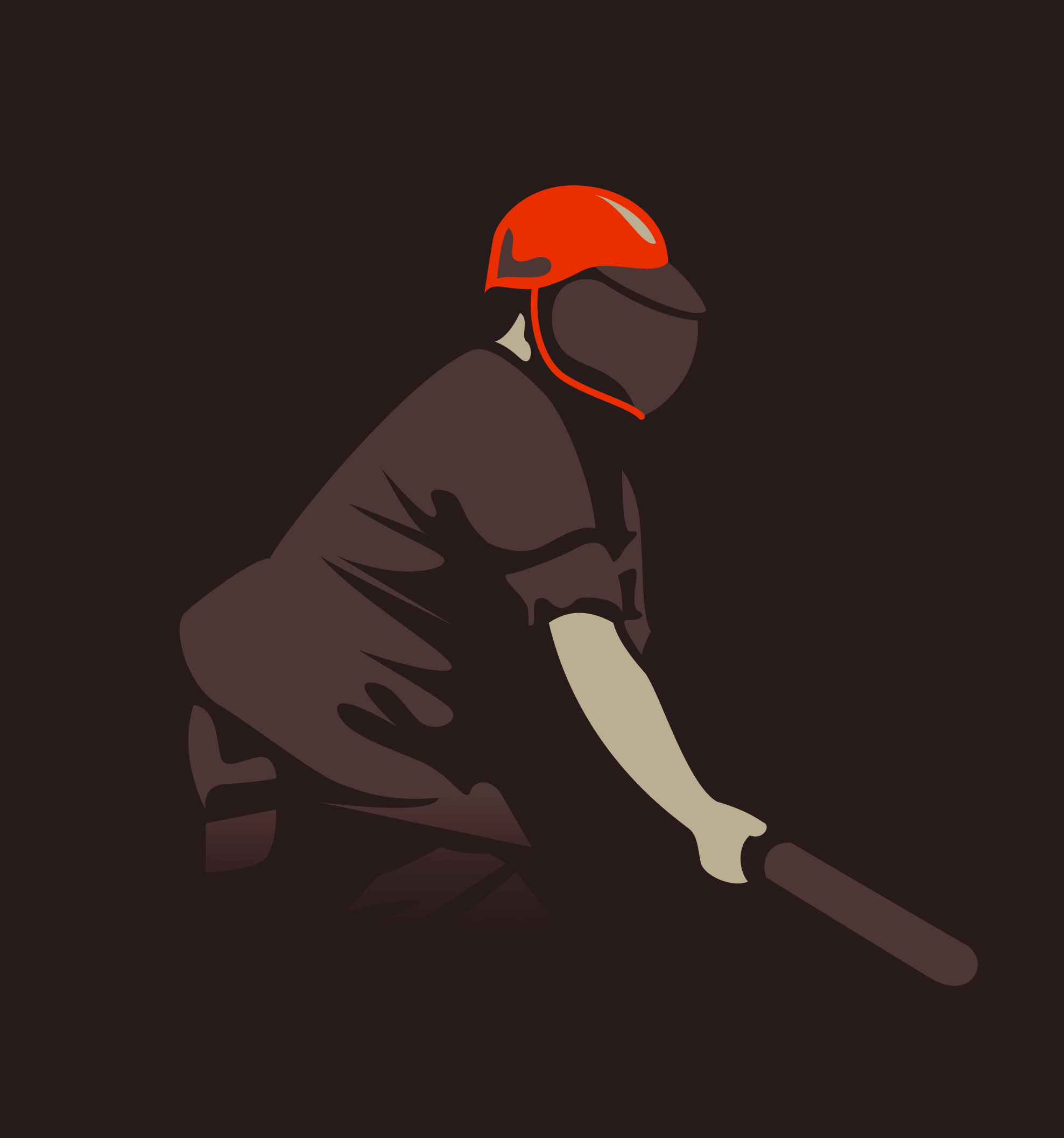
Martial Law violence was experienced only by the lawless elements of society: the Communists, the NPA, those that caused unrest against the government. Law-abiding, ordinary citizens were spared.


Stories of Martial Law violence are largely exaggerated. Rumors of it spread only as propaganda from Marcos’s political opponents.
WRONG.
There were many accounts regarding Martial Law violence in the provinces. In Eastern Visayas alone, over 4,040 Martial Law victims are documented by the Commission on Human Rights. In Sultan Kudarat, the Malisbong Massacre killed about 1,500 men, women, and children during Ramadan in an “attempt to keep the peace.”
WRONG.
Victims of Martial Law violence cannot easily be categorized as simply those that took up arms against the government. The Marcos government was not beyond taking innocent hostages among citizens to get what they wanted. Boyet Mijares, for instance, was 16 when he was brutally tortured and killed to silence his journalist father, Primitivo Mijares.
WRONG.
In most conservative estimates, over 3,000 are reported killed, with the figure 3,257 often cited to include 737 disappearances from reports by Task Force Detainees Philippines. The Human Rights Victims Claims’ Board has received about 75,000 claims of human rights violations from the Martial Law period, many of which remain uncompensated to this day. See: Remembering the Heroes of People Power.
WHICH STATEMENT IS TRUE? Round 5 of 6


It wasn’t Marcos who was corrupt; it was just the people around him. While he was overseeing the Golden Age of the Philippines, he couldn’t possibly have monitored the abuses of all the officials around him.

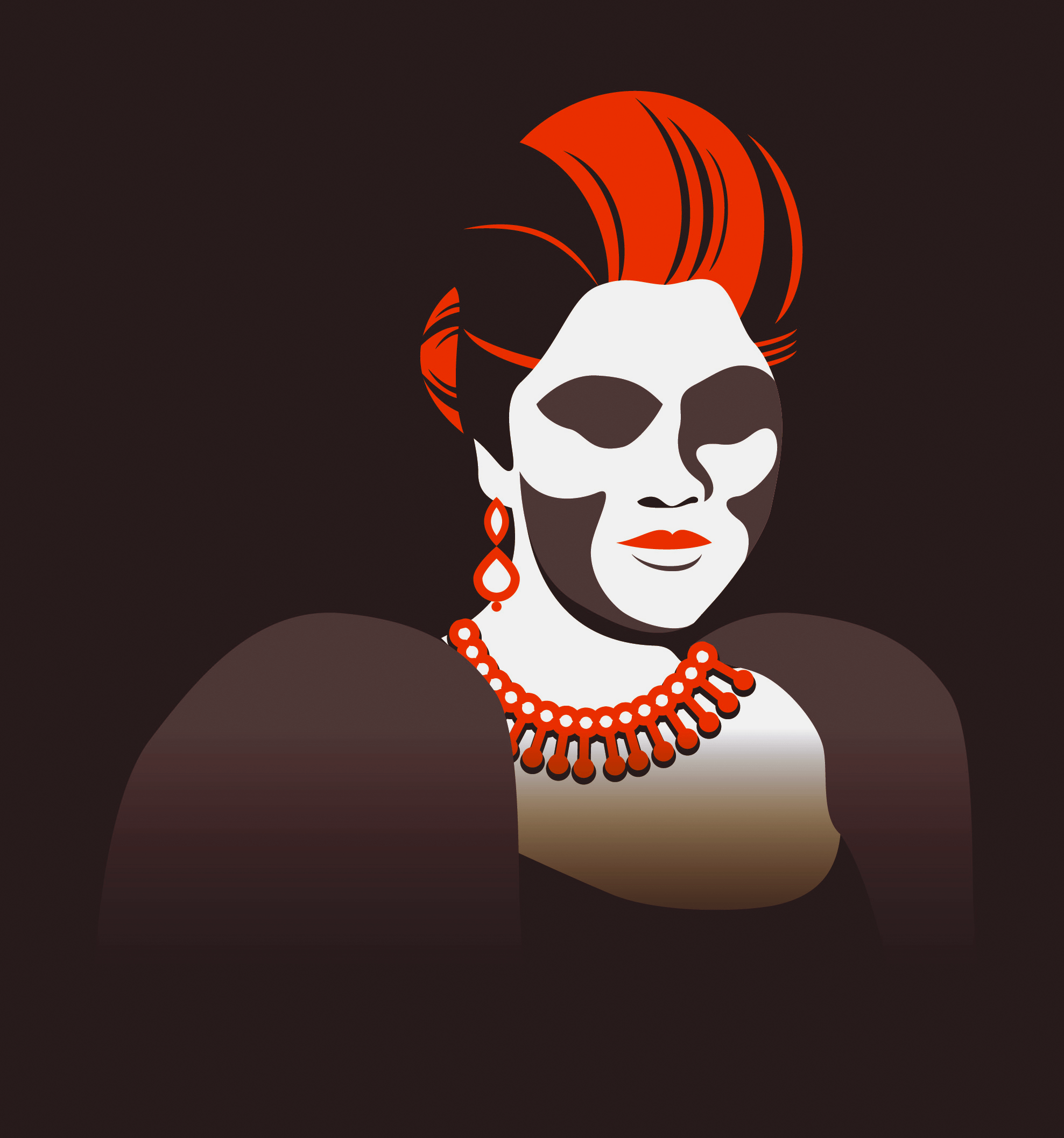
It wasn’t Marcos who was corrupt; it was Imelda who went behind his back and used the nation’s money for her lavish lifestyle (including her notorious shoe collection).

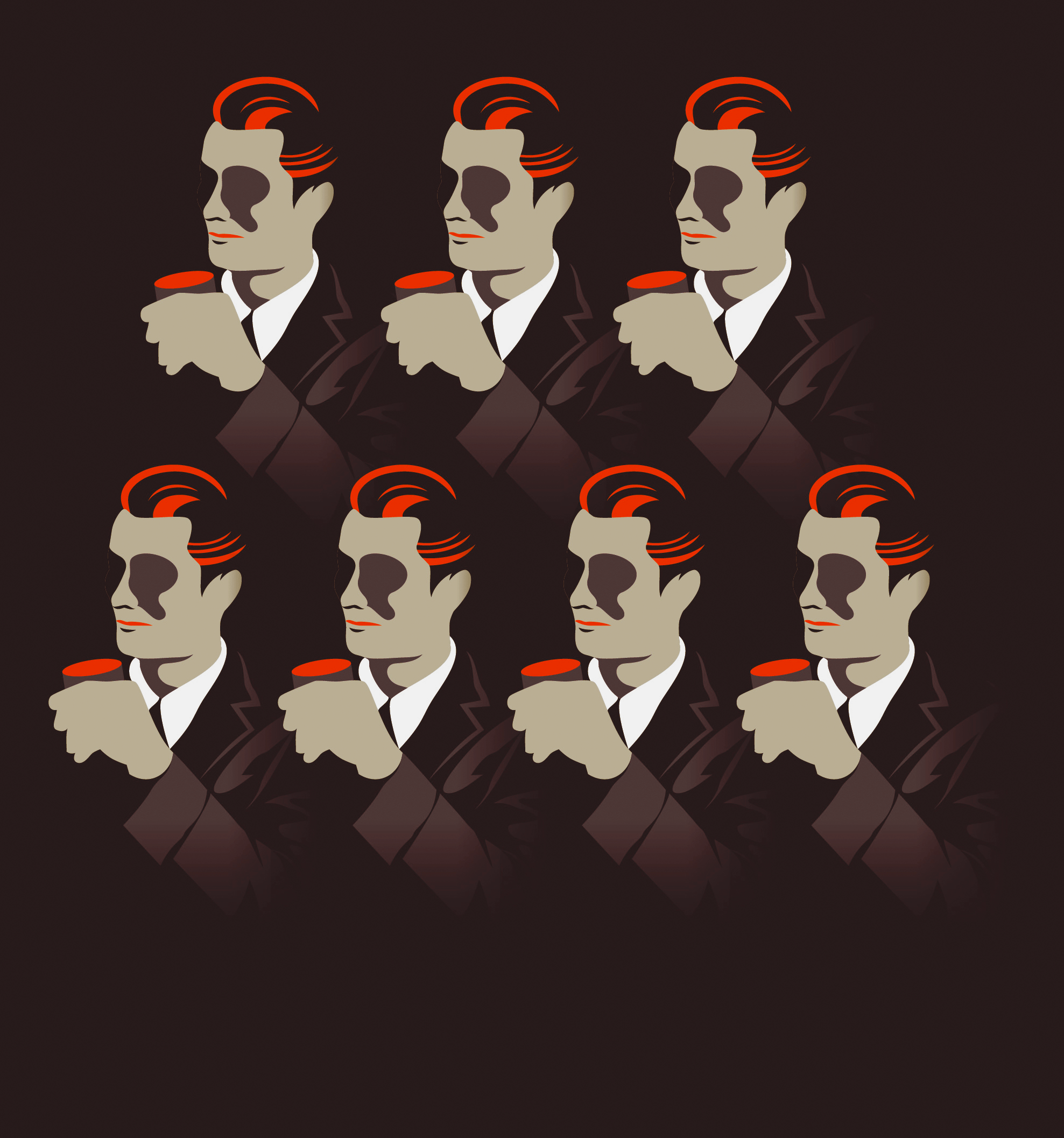
Marcos was corrupt, yes, but so is every other politician. What was important was that he achieved more than any other president of the Philippines.
WRONG.
Marcos was not blind to this network of corruption; he was its center. He himself who put his cronies in power, he rewarded those who earned his favor and punished those who displeased him. For example, in plans for the Bataan Nuclear Power Plant, Marcos awarded the contract to the firm associated with his golfing partner Herminio Disini, even though their proposal ballooned the estimated price from $500M to $1.2B. Marcos and Disini then proceeded to keep large shares of the money that came out of the overpriced raw materials for the plant, which was eventually never finished.
Learn more about it here 👉 It Takes a Village to Loot a Nation: Cronyism and Corruption
WRONG.
Both Ferdinand and Imelda Marcos grossly enabled and aggravated each other’s violent plunder of the nation. They were so entangled in the power they shared that the Marcos dictatorship has been referred to as a “conjugal dictatorship”. Ferdinand legitimized many of Imelda’s projects such as the Cultural Center of the Philippines through presidential decrees, allowing her unbridled access to the nation’s finances which later funded her expensive shopping trips. During these trips, she would often speak grandly about her husband’s achievements in the country and the New Society they were building together.
WRONG.
Marcos is ranked 2nd among the world’s most corrupt politicians. If anything, his biggest achievement is the scale of his corruption, which was on an entirely different league from his predecessors’ and his successors’. His “achievements” in terms of infrastructure projects have been established to be massive opportunities for plunder. His peace and order initiatives have had the opposite effect of exacerbating armed conflict with the Communists. His promise to give dignified lives to every Filipino through his New Society collapses in contradiction in the face of the violence he inflicted on countless Filipinos from all around the country.
Learn more about it here 👉 It Takes a Village to Loot a Nation: Cronyism and Corruption
WHICH STATEMENT IS TRUE? Round 6 of 6


Ferdinand Marcos Jr. (a.k.a., Bongbong Marcos) was far too young during Martial Law and he was not involved in any atrocity which may have taken place back then.


Imee Marcos was far too young during Martial Law and she was not involved in any atrocity which may have taken place back then.


When Martial Law ended thirty years ago, everything reset for the Marcoses. Marcos’s children are no longer involved in the abuses of the past.
WRONG.
Bongbong Marcos was 15 years old at the beginning of Martial Law and 29 years old at the end. During Martial Law, he was governor of Ilocos Norte and chair of the Philippine Communications Satellite Corporation. While many languished in poverty, Bongbong was earning a reported monthly salary of $97,000 through the corporation, one of the Marcoses’ conduits of amassing private wealth. Calauit Island, now a wildlife sanctuary, was created as a private hunting ground for Bongbong, with 120 poor families evicted from the land to make way for the African animals bought at government expense.
Learn more about it here 👉 Keeping Up with the Marcoses: Money, Fame and Fortune
WRONG.
Imee Marcos was 17 years old at the beginning of Martial Law and 31 years old at the end. During Martial Law, she was involved in the murder of Archimedes Trajano, who questioned her appointment as National Chairman of the Kabataang Barangay youth organization. Trajano was seized by guards, dragged away, and his body was found mere hours later, blue-black, bearing signs of violent torture.
Learn more about it here 👉 Keeping Up with the Marcoses: Money, Fame and Fortune
WRONG.
Though Marcos himself was ousted from the presidency, his family continues to benefit greatly from the vast amount of wealth they stole from the nation. Independent sources of evidence corroborate that the Marcoses stole over $10B which remains unreturned.
Learn more about it here 👉 The PCGG and the Marcoses’ Ill-Gotten Wealth
YOUR FINAL SCORE IS 0/6
All Statements are Lies
There are so many Marcos deceptions that up until today are being spread as truth. As engaged citizens of this country, we should not allow the revisionism of our history and erasure of stories to persist. Become an envoy of the truth and learn more about Marcos’ Martial Law.

LIE: Marcos was a bright and upstanding citizen from the time of his youth, with a morally upright character that destined him for the presidency.
At only 18 years old and still a university student, Ferdinand was a convicted murder who was found guilty of gunning down his father’s political rival for the position of district representative Julio Nandalusan in 1935. Evidence pointed to Ferdinand’s direct involvement and he was sentenced to life imprisonment. Learn more about it here 👉 Young Marcos

LIE: Marcos was a decorated war hero, with medals from the United States recognizing his heroism during the war. These included two prestigious US Silver Stars and a Distinguished Service Cross.
Though it is true that Ferdinand fought during the Second World War, claims about his military prestige have long been disputed and disproven. As a recent study by the National Historical Commission of the Philippines shows, official wartime documents and works on Bataan make no mention of Ferdinand’s exploits, his receipt of the three US medals, or the existence of the Ang Mga Maharlika guerilla unit. Learn more about it here 👉 Young Marcos

LIE: Marcos led a successful guerilla campaign called Ang Mga Maharlika against the Japanese forces.
On multiple occasions, the US government did not recognize Ang Mga Maharlika as a guerilla unit due to the lack of evidence and inconsistencies in Ferdinand’s claims about their wartime accomplishments.
The movie Maharlika was produced as a propaganda attempt by Marcos to spread news of his “war exploits” to the Filipino public. Learn more about it here 👉 Young Marcos

LIE: Marcos’s implementation of Martial Law was not corruption. He was simply exercising a legitimate power of the President to protect his people.
While declaring Martial Law is technically included among his powers, Marcos used those technicalities not to protect the people but to hold on to power. This was a planned move toward a parliamentary system of government that would have extended Marcos’s term indefinitely. This was also a move to eliminate the checks and balances—the legislative and judicial branches, and even the Constitution itself. Learn more about it here 👉 The Makings of a Constitutional Dictator

LIE: Marcos implemented Martial Law as a response to imminent threats to national security; because of Martial Law, crime rates dropped and Marcos could suppress the armed struggle against the government.
During the declaration of Martial Law, armed struggle against the government, often associated with the CPP-NPA, was still relatively young. While Marcos’s anticommunist campaign put them under heavy attack, the repressive regime also resulted in many youths joining the movement in the countryside. Estimates of the size of the NPA grew from about 1,500 in 1976 to about 35,000 in 1985. Learn more about it here 👉 Declaration of Martial Law
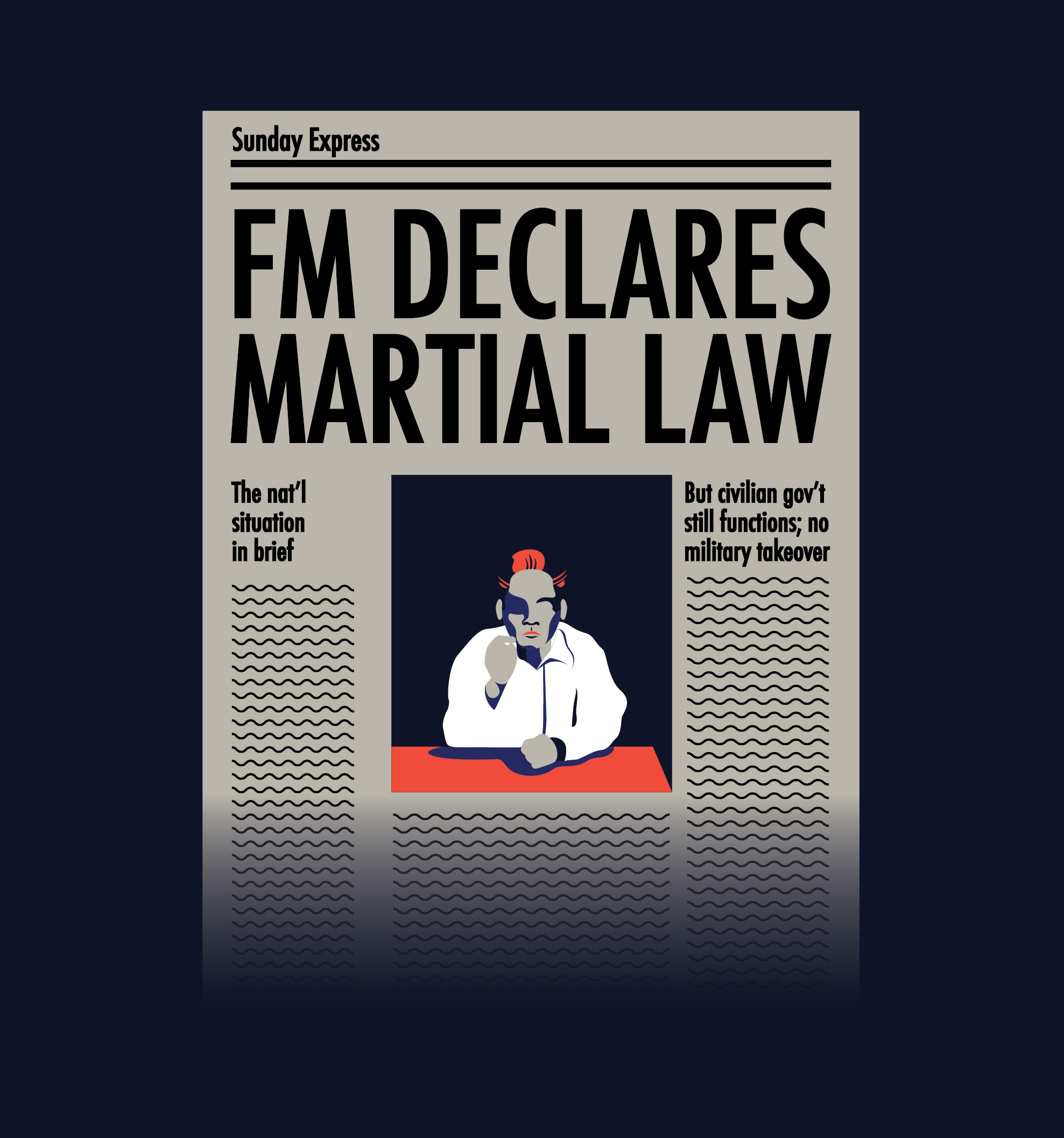
LIE: Marcos didn’t personally want to implement Martial Law. He was forced to do it because the violence had gotten out of hand, even affecting his top officials.
Marcos orchestrated the ambush of his Secretary of Defense, Juan Ponce Enrile, to heighten the public’s impression of threat to national security. Enrile admitted in an interview following his 1986 shift in allegiance against Marcos that the shooting of his convoy had indeed been staged by the administration.
On the night of the incident, Marcos told Enrile over the phone:
“Make it look good. Kailangan siguro ay may masaktan o kung mayroon mapatay ay mas mabuti. O, hala, sige, Johnny, and be sure the story catches the Big News or Newswatch and call me as soon as it is over.”
Learn more about it here 👉 Declaration of Martial Law

LIE: Back during Marcos’s time, many roads and bridges were being built, contributing greatly to economic development.
Many of Marcos’ projects were funded by foreign loans that left the Philippines with an outstanding debt of about $28.3 billion by 1986. While various infrastructure projects allowed the appearance of economic activity, they really contributed to crippling the nation’s finances.
Moreover, many of these projects were implemented with the underlying objective of enriching Marcos himself and his many cronies, as they would divert massive funds and kickbacks from the project to their personal accounts.
Learn more about it here 👉 Edifice Complex: Building on the Backs of the Filipino People

LIE: Back during Marcos’s time, poverty was at an all-time low due to his many inclusive economic projects.
Poverty worsened over the course of the Marcos era. Before Marcos took office, 4 out of 10 families were poor and by the end of his rule. 6 out of 10 families were poor.
While industrialization allowed the appearance of economic growth, poverty remained rampant in the country. Poverty incidence rose from 41.0% in 1965 to 58.9% in 1985, going as high as 70% in some provincial regions. Far from uplifting the poor, Imelda even attempted to conceal them from the global public with whitewashed walls in the Miss Universe pageant of 1974, and ordered the demolition of urban poor settlements by the airport because they were the first thing visitors from the international community would see.
Learn more about it here 👉 Martial Law in Data

LIE: Back during Marcos’s time, the Philippines could compete with the best Asian economies. If Marcos hadn’t been overthrown, we could be like Singapore today.
During Marcos rule, we were dwarfed by Asian countries which had economies comparable to ours in the ’60s (e.g., Thailand, South Korea). By the mid-‘80s, our economy was left in the dust. This is precisely due to the Marcos period’s widespread plunder and mismanagement of national finances that the Philippines has struggled in the past decades to recover until today.
From a nominal figure of $0.36 billion in 1961, our external debt skyrocketed to $28.26 billion in 1986. Marcos’s debt-driven growth was growth that sacrificed long-term benefits for short-term gratification.
Learn more about it here 👉 Martial Law in Data

LIE: Martial Law violence was limited to Metro Manila. The provinces did not experience this violence, only the peace and development that was promised.
There were many accounts regarding Martial Law violence in the provinces. In Eastern Visayas alone, over 4,040 Martial Law victims are documented by the Commission on Human Rights. In Sultan Kudarat, the Malisbong Massacre killed about 1,500 men, women, and children during Ramadan in an “attempt to keep the peace.”

LIE: Martial Law violence was experienced only by the lawless elements of society: the Communists, the NPA, those that caused unrest against the government. Law-abiding, ordinary citizens were spared.
Victims of Martial Law violence cannot easily be categorized as simply those that took up arms against the government. The Marcos government was not beyond taking innocent hostages among citizens to get what they wanted. Boyet Mijares, for instance, was 16 when he was brutally tortured and killed to silence his journalist father, Primitivo Mijares.

LIE: Stories of Martial Law violence are largely exaggerated. Rumors of it spread only as propaganda from Marcos’s political opponents.
In most conservative estimates, over 3,000 are reported killed, with the figure 3,257 often cited to include 737 disappearances from reports by Task Force Detainees Philippines. The Human Rights Victims Claims’ Board has received about 75,000 claims of human rights violations from the Martial Law period, many of which remain uncompensated to this day. See: Remembering the Heroes of People Power.

LIE: It wasn’t Marcos who was corrupt; it was just the people around him. While he was overseeing the Golden Age of the Philippines, he couldn’t possibly have monitored the abuses of all the officials around him.
Marcos was not blind to this network of corruption; he was its center. He himself who put his cronies in power, he rewarded those who earned his favor and punished those who displeased him. For example, in plans for the Bataan Nuclear Power Plant, Marcos awarded the contract to the firm associated with his golfing partner Herminio Disini, even though their proposal ballooned the estimated price from $500M to $1.2B. Marcos and Disini then proceeded to keep large shares of the money that came out of the overpriced raw materials for the plant, which was eventually never finished.
Learn more about it here 👉 It Takes a Village to Loot a Nation: Cronyism and Corruption

LIE: It wasn’t Marcos who was corrupt; it was Imelda who went behind his back and used the nation’s money for her lavish lifestyle (including her notorious shoe collection).
Both Ferdinand and Imelda Marcos grossly enabled and aggravated each other’s violent plunder of the nation. They were so entangled in the power they shared that the Marcos dictatorship has been referred to as a “conjugal dictatorship”. Ferdinand legitimized many of Imelda’s projects such as the Cultural Center of the Philippines through presidential decrees, allowing her unbridled access to the nation’s finances which later funded her expensive shopping trips. During these trips, she would often speak grandly about her husband’s achievements in the country and the New Society they were building together.

LIE: Marcos was corrupt, yes, but so is every other politician. What was important was that he achieved more than any other president of the Philippines.
Marcos is ranked 2nd among the world’s most corrupt politicians. If anything, his biggest achievement is the scale of his corruption, which was on an entirely different league from his predecessors’ and his successors’. His “achievements” in terms of infrastructure projects have been established to be massive opportunities for plunder. His peace and order initiatives have had the opposite effect of exacerbating armed conflict with the Communists. His promise to give dignified lives to every Filipino through his New Society collapses in contradiction in the face of the violence he inflicted on countless Filipinos from all around the country.
Learn more about it here 👉 It Takes a Village to Loot a Nation: Cronyism and Corruption

LIE: Ferdinand Marcos Jr. (a.k.a., Bongbong Marcos) was far too young during Martial Law and he was not involved in any atrocity which may have taken place back then.
Bongbong Marcos was 15 years old at the beginning of Martial Law and 29 years old at the end. During Martial Law, he was governor of Ilocos Norte and chair of the Philippine Communications Satellite Corporation. While many languished in poverty, Bongbong was earning a reported monthly salary of $97,000 through the corporation, one of the Marcoses’ conduits of amassing private wealth. Calauit Island, now a wildlife sanctuary, was created as a private hunting ground for Bongbong, with 120 poor families evicted from the land to make way for the African animals bought at government expense.
Learn more about it here 👉 Keeping Up with the Marcoses: Money, Fame and Fortune

LIE: Imee Marcos was far too young during Martial Law and she was not involved in any atrocity which may have taken place back then.
Imee Marcos was 17 years old at the beginning of Martial Law and 31 years old at the end. During Martial Law, she was involved in the murder of Archimedes Trajano, who questioned her appointment as National Chairman of the Kabataang Barangay youth organization. Trajano was seized by guards, dragged away, and his body was found mere hours later, blue-black, bearing signs of violent torture.
Learn more about it here 👉 Keeping Up with the Marcoses: Money, Fame and Fortune

LIE: When Martial Law ended thirty years ago, everything reset for the Marcoses. Marcos’s children are no longer involved in the abuses of the past.
Though Marcos himself was ousted from the presidency, his family continues to benefit greatly from the vast amount of wealth they stole from the nation. Independent sources of evidence corroborate that the Marcoses stole over $10B which remains unreturned.
Learn more about it here 👉 The PCGG and the Marcoses’ Ill-Gotten Wealth

